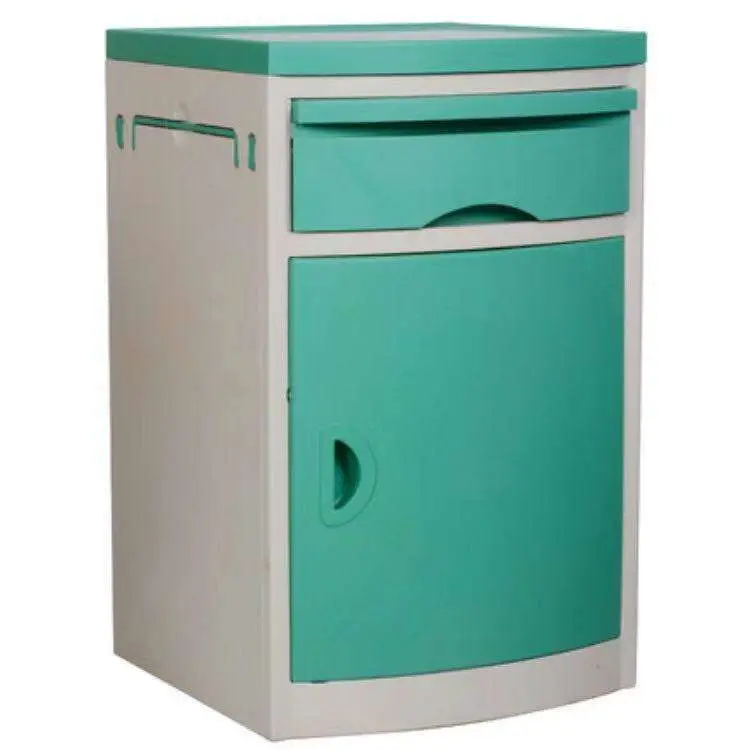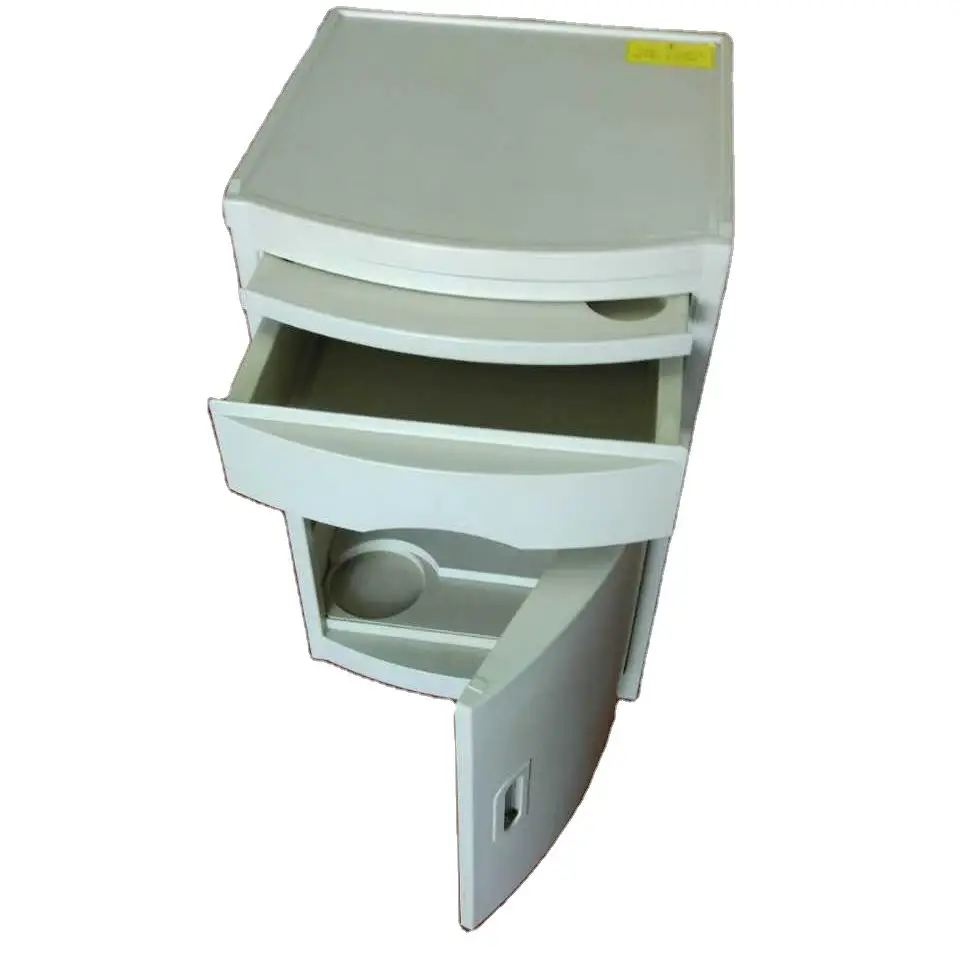Address
304 North Cardinal St.
Dorchester Center, MA 02124
Work Hours
Monday to Friday: 7AM - 7PM
Weekend: 10AM - 5PM
A hospital bedside locker is an essential piece of furniture in any medical facility. It provides patients with a convenient place to store personal belongings, medical supplies, and other necessities. Choosing the right hospital bedside locker can significantly enhance patient comfort and the overall efficiency of healthcare services. In this comprehensive guide, we will explore various factors to consider when selecting a hospital bedside locker, the different types available, and how they can improve patient care. We will also address some frequently asked questions to help you make an informed decision.

A well-designed hospital bedside locker plays a crucial role in enhancing patient comfort and convenience. It allows patients to keep their personal items within easy reach, reducing the need to call for assistance frequently. This accessibility helps patients feel more independent and comfortable during their stay.
Hospital bedside lockers also support medical staff efficiency. By providing a designated space for storing medical supplies and patient belongings, these lockers help keep the patient area organized and clutter-free. This organization allows healthcare professionals to locate items quickly, improving response times and overall patient care.
Properly designed hospital bedside lockers contribute to maintaining hygiene and safety standards in healthcare settings. Lockers with easy-to-clean surfaces and antimicrobial coatings can help reduce the risk of infections. Additionally, secure locking mechanisms ensure that personal and medical items are safely stored, preventing unauthorized access and potential misuse.
The material of the hospital bedside locker is a critical factor to consider. Common materials include metal, wood, and plastic. Each material has its advantages and disadvantages:
The size and storage capacity of the hospital bedside locker should be appropriate for the needs of the patients and the available space. Consider the following:
Mobility and accessibility are important features, especially in a dynamic hospital environment. Lockers with wheels or casters allow for easy movement and repositioning. Additionally, ensure that the locker design allows for easy access to all compartments and drawers, even for patients with limited mobility.
Security is a key consideration for hospital bedside lockers. Look for lockers with robust locking mechanisms to keep personal and medical items secure. Some lockers come with key locks, combination locks, or electronic locks for added security. Ensure that the locking system is easy to use for both patients and staff.
Hygiene is paramount in healthcare settings. Choose hospital bedside lockers with smooth, non-porous surfaces that are easy to clean and disinfect. Lockers with antimicrobial coatings or materials can provide an extra layer of protection against the spread of infections.
| Feature | Metal Lockers | Wooden Lockers | Plastic Lockers |
|---|---|---|---|
| Durability | High | Moderate | Moderate |
| Ease of Cleaning | Easy | Moderate | Easy |
| Weight | Heavy | Moderate | Light |
| Aesthetic Appeal | Industrial | Warm and Attractive | Functional |
| Susceptibility to Damage | Low (except rust) | Moderate (moisture) | Low |
| Mobility | Moderate (with wheels) | Moderate (with wheels) | High (lightweight) |
| Security Features | High | Moderate | Moderate |
| Hygienic Design | High | Moderate | High |
Standard bedside lockers typically feature a single drawer and a cabinet with a shelf. They provide basic storage for personal items and medical supplies. These lockers are suitable for general use in most hospital settings.
Overbed tables with lockers combine the functionality of an overbed table and a bedside locker. They offer a convenient surface for meals, reading, or writing, along with storage compartments. This design is ideal for patients who need frequent access to their belongings while bedridden.
Multi-compartment lockers offer additional storage space with multiple drawers, shelves, and compartments. They are suitable for patients with longer hospital stays or those who need to store more personal items. These lockers often feature separate sections for different types of items, making organization easier.
Mobile bedside lockers are equipped with wheels or casters, allowing for easy movement. They are ideal for dynamic hospital environments where the flexibility to reposition lockers is important. Mobile lockers often feature locking casters to ensure stability when needed.
Customizable lockers can be tailored to meet specific needs and preferences. They may include features such as adjustable shelves, specialized compartments, and custom security options. These lockers are suitable for specialized care units or patients with unique requirements.

Hospital bedside lockers improve the patient experience by providing convenient storage for personal items. This accessibility helps patients feel more at home and reduces the need to call for assistance frequently.
By providing designated storage for personal and medical items, bedside lockers help keep patient rooms organized. This organization allows medical staff to locate items quickly, improving efficiency and patient care.
Locking mechanisms on hospital bedside lockers ensure that personal and medical items are securely stored. This security helps prevent unauthorized access and potential misuse of medications and other sensitive items.
Lockers with smooth, non-porous surfaces and antimicrobial coatings contribute to better hygiene in healthcare settings. Easy-to-clean lockers reduce the risk of infections and help maintain a sanitary environment.
Choosing the best hospital bedside locker involves considering various factors such as material, size, mobility, security, and hygiene. By understanding the different types of lockers available and their benefits, healthcare facilities can make informed decisions that enhance patient comfort, improve organization, and support efficient medical care. The right hospital bedside locker can significantly impact the overall patient experience and the effectiveness of healthcare services.
Common materials used in Hospital bedside tables include metal, wood, and plastic. Each material has its advantages, such as durability, ease of cleaning, and aesthetic appeal.
Hospital bedside tables improve patient care by providing convenient storage for personal and medical items, enhancing organization, and supporting hygiene and security standards in healthcare settings.
Yes, mobile bedside lockers are beneficial in hospital environments as they allow for easy repositioning and flexibility. Lockers with wheels or casters can be moved to accommodate changing needs and ensure accessibility.
Look for hospital bedside lockers with robust locking mechanisms such as key locks, combination locks, or electronic locks. These features help ensure the secure storage of personal and medical items.
Yes, hospital bedside lockers can be customized to meet specific needs and preferences. Customizable features may include adjustable shelves, specialized compartments, and custom security options.
The material of a hospital bedside locker affects its durability, ease of cleaning, weight, and aesthetic appeal. For example, metal lockers are durable and easy to clean, while wooden lockers offer a warm and attractive look.
Plastic hospital bedside lockers are lightweight, easy to clean, and resistant to moisture and chemicals. They are suitable for environments where hygiene and mobility are priorities.
Hygiene is important in hospital bedside lockers to reduce the risk of infections and maintain a sanitary environment. Lockers with smooth, non-porous surfaces and antimicrobial coatings help achieve better hygiene.
Hospital bedside lockers enhance patient comfort by providing a convenient place to store personal belongings within easy reach. This accessibility helps patients feel more independent and comfortable during their stay.
When choosing the size of a hospital bedside locker, consider the available space, the amount of storage needed, and the types of items to be stored. Ensure that the locker provides adequate storage without occupying too much floor space.
